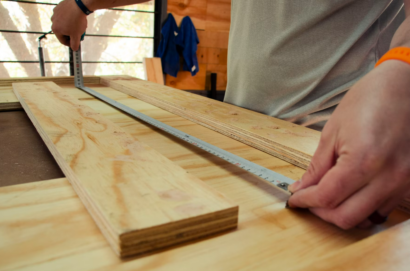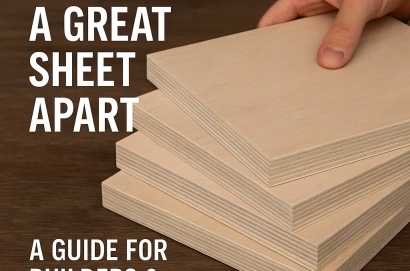Always low prices and perfect quality
Whether you’re tackling a DIY project or a contractor working on a large-scale build, selecting the right plywood can make or break your project. At Plyman, we understand that navigating the world of plywood options can be overwhelming. That’s why we’ve put together this comprehensive guide to help you make an informed decision.
Understanding Your Project Needs
Before diving into the plywood aisle, take a moment to consider your project’s specific requirements:
- Purpose: Is your project structural, decorative, or both?
- Environment: Will the plywood be exposed to moisture or weather?
- Appearance: Do you need a smooth, finished surface or is functionality more important?
- Budget: What’s your price range for materials?
Answering these questions will help narrow down your options and guide you towards the perfect plywood for your needs.
Decoding Plywood Grades
Plywood grades can seem like a secret code, but they’re actually quite simple once you understand them. Grades range from A (highest quality) to D (lowest quality), and often come in pairs (e.g., A/C) to indicate the quality of both faces.
- A-grade: Smooth, sanded surface with minimal defects. Ideal for high-end furniture and visible surfaces.
- B-grade: Minor imperfections, suitable for painting. Great for interior projects.
- C-grade: Visible defects, best for structural applications where appearance isn’t critical.
- D-grade: Rough surface with knots and holes. Perfect for hidden structural uses.
At Plyman, we offer a range of grades to suit every project. Our Plyman Champa Plywood is perfect for lining, while our C/D Pine Non-Structural Plywood is ideal for utility applications.
Choosing the Right Thickness
Plywood thickness can range from 3mm to 25mm or more. The right thickness depends on your project’s structural needs and weight-bearing requirements. For example:
- 3-6mm: Ideal for drawer bottoms or backing boards
- 12mm: Great for cabinet sides and general-purpose use
- 18-25mm: Perfect for flooring, heavy-duty shelving, and structural applications
Remember, thicker isn’t always better. Consider the weight and cost implications of thicker plywood against your project’s needs.
Making Your Decision
Armed with this knowledge, you’re ready to make an informed choice. Remember, the cheapest option isn’t always the most cost-effective in the long run. Investing in quality plywood can save you time, money, and headaches down the line.
Need More Guidance?
For a deeper dive into plywood selection and usage, download our free e-brochure: “Plyman’s Guide to Material Selection & Basic Knowledge.” This comprehensive resource is packed with expert tips, detailed product information, and project ideas to help you make the most of your plywood purchase.
At Plyman, we’re committed to helping you find the perfect materials for your project. Whether you’re building a backyard deck or crafting custom furniture, we’ve got the plywood and expertise to bring your vision to life. Visit our website or stop by our Auckland showroom to explore our full range of products and get personalized advice from our team of experts.
Remember, the right plywood is the foundation of a successful project. Choose wisely, build confidently, and create something amazing with Plyman!



